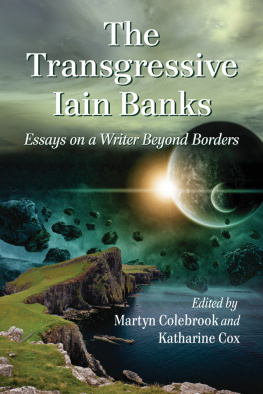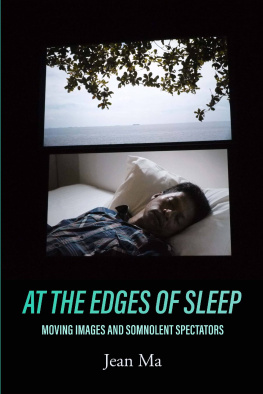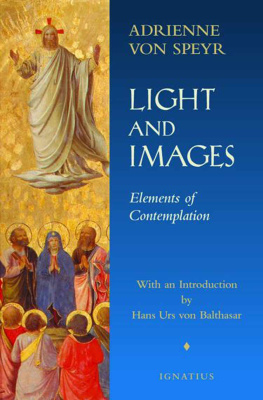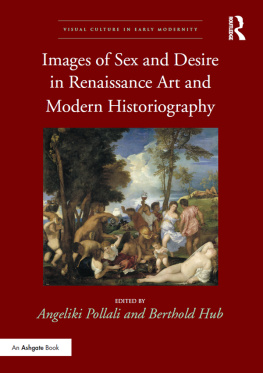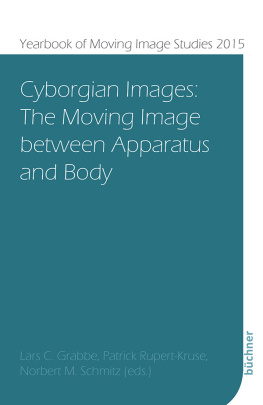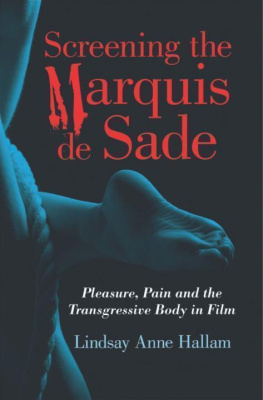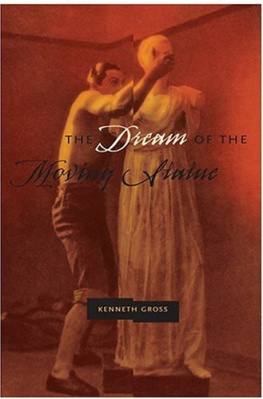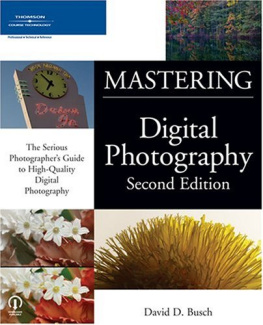Gaafar - Technology and Desire: The Transgressive Art of Moving Images
Here you can read online Gaafar - Technology and Desire: The Transgressive Art of Moving Images full text of the book (entire story) in english for free. Download pdf and epub, get meaning, cover and reviews about this ebook. year: 2014, publisher: National Book Network International, genre: Romance novel. Description of the work, (preface) as well as reviews are available. Best literature library LitArk.com created for fans of good reading and offers a wide selection of genres:
Romance novel
Science fiction
Adventure
Detective
Science
History
Home and family
Prose
Art
Politics
Computer
Non-fiction
Religion
Business
Children
Humor
Choose a favorite category and find really read worthwhile books. Enjoy immersion in the world of imagination, feel the emotions of the characters or learn something new for yourself, make an fascinating discovery.
Technology and Desire: The Transgressive Art of Moving Images: summary, description and annotation
We offer to read an annotation, description, summary or preface (depends on what the author of the book "Technology and Desire: The Transgressive Art of Moving Images" wrote himself). If you haven't found the necessary information about the book — write in the comments, we will try to find it.
Gaafar: author's other books
Who wrote Technology and Desire: The Transgressive Art of Moving Images? Find out the surname, the name of the author of the book and a list of all author's works by series.
Technology and Desire: The Transgressive Art of Moving Images — read online for free the complete book (whole text) full work
Below is the text of the book, divided by pages. System saving the place of the last page read, allows you to conveniently read the book "Technology and Desire: The Transgressive Art of Moving Images" online for free, without having to search again every time where you left off. Put a bookmark, and you can go to the page where you finished reading at any time.
Font size:
Interval:
Bookmark:

First published in the UK in 2014 by
Intellect, The Mill, Parnall Road, Fishponds, Bristol, BS16 3JG, UK
First published in the USA in 2014 by
Intellect, The University of Chicago Press, 1427 E. 60th Street,
Chicago, IL 60637, USA
Copyright 2014 Intellect Ltd
All rights reserved. No part of this publication may be reproduced, stored in a retrieval system, or transmitted, in any form or by any means, electronic, mechanical, photocopying, recording, or otherwise, without written permission.
A catalogue record for this book is available from the British Library.
Cover designer: Sahar Aharoni
Copy-editor: Michael Eckhardt
Production manager: Jelena Stanovnik and Claire Organ
Typesetting: Contentra Technologies
Print ISBN: 978-1-84150-461-2
ePDF ISBN: 978-1-78320-167-9
ePub ISBN: 978-1-78320-166-2
Printed and bound by Hobbs, UK
The idea of organizing an international conference on the transgressive art of moving images against the background of the ever-growing body of research in visual studies, the role of imaging technologies and the impact of the digital advent in art history, media, film, and cultural studies came to us amidst our involvement in the doctoral school Image, Body, Medium Towards an Anthropological Perspective that was based at Staatliche Hochschule fr Gestaltung Karlsruhe (Karlsruhe University of Arts and Design). At the time, we discussed the objective to conceptually and methodologically extend the very notion of the life of images (W. J. T. Mitchell) to that of reflections on the (new) technologies of images production and their very aesthetics, as well as the sublime desire of images in motion that we felt were perpetually transgressing their very frames in the contemporary (post-)medial contexts of our time. In reference to these visually conceptual correlations, we invited a number of scholars to contribute and participate in a major international conference entitled Technology and Desire The Transgressive Art of Moving Images that was held at the Zentrum fr Kunst und Medientechnologie, ZKM (Centre for Art and Media), in Karlsruhe, in close cooperation with the Art Theory and Media Philosophy department of the University of Arts and Design. Most of the papers in this volume were presented at this conference. The ZKM as an internationally renowned cutting-edge art and media research institution provided the conferences venue. This conference and publication would have not been possible without the generous financial funding of the DFG (the German Research Funding Organization) doctoral school Image, Body, Medium Towards an Anthropological Perspective, to which we, in retrospect, express our sincere thanks. We owe our deep gratitude to Samantha King from Intellect Books who has acknowledged the idea and the potential of this book in the beginning. We especially thank Jelena Stanovnik, our committed editor at Intellect, who has produced and supported this project during all its different stages and navigated it to the end with Intellects editorial team. We would like to thank Sahar Aharoni, who photographed and designed the conferences logo and poster of an abstract cameras lens and turned it into a vision of plasticity, which also serves as the cover of this volume. Our gratitude goes to Jochen Mevius, who has translated a number of chapters from German to English as indicated in this volume. Adel Iskandar has given us helpful advice in reviewing parts of the manuscript. We should particularly like to thank the staff at ZKMs library, whose help has been indispensable for the research on this collection. Elke Reinhuber and Sebastian Pelz have kindly supported the final stages of production. We are grateful to the anonymous reviewer whose precise comments have helped to amend the manuscript. Finally, our cordial thanks go to all contributors of this volume, their challenging and rigorous talks and texts, as well as their patience during the time of the preparation of this volume. Last, but never least, we sincerely thank all the artists in this collection, who have provided installation shots and images of their art works, especially Isaac Julien, Malcolm LeGrice, Rohini Devasher, Akram Zaatari, Joana Hadjithomas and Khalil Joreige, Youki Hirakawa, and Jim Campbell. Very warm thanks go to Isaac Julien for stimulating conversations, his kind support during the production of this volume and beyond, as well as the inspirational and intellectual insight into his own artistic practice that he generously shared with us in long interviews and meetings in London and Germany.
Rania Gaafar and Martin Schulz
In James Williamsons pioneering short film The Big Swallow (1901), the spectator paradigmatically encounters the physical human resistance to the capturing and signifying camera and, by extension, to the operators attempt to display an image of the subject in front of the camera lens. The form-and-shape-giving machinery of his very image on the screen is literally swallowed up by the actor on-screen, who is in front of the camera. The critical irony of this shot and further reflection of it will probably become more obvious today, more than a hundred years after the production of Williamsons film, and with the advent of the digital, the post-humanist and techno-scientific yet affect-induced material turn in cultural and media theory. In the very seconds following this big swallow and the extreme close-up of the mouth with its almost infinitely dark antrum, what we see is basically the reappearance of the image, the continuing existence and animation of the moving image, of the film itself, despite and after the supposed disappearance of the recording camera within the moving images hors cadre and inside the subjects body. The image resists its allegedly human-operated animation and origination, as well as its time, its technologically-controlled actuality and visibility on the screen. It references an outside of images in critical thought as well as in the spheres of the virtual that lie beyond the semiotic layers of signs and the external control and operation of humans. It rather transforms them to conditions of new assemblages by referencing forms of embodiment through the images transmissive constituents and techniques. This transformational process and its embedded outcome (i.e. the continuous and uninterrupted film we see despite the killing of the camera) within the image implies to a certain extent an intra-action of phenomena that performatively enact boundaries that challenges the boundaries between subjects and objects and accomplishes matter and its vital conditions through discourse (be it cultural, technological, science-oriented or media specific).
Despite the human killing of its mechanical generator the camera we might reflect this very short paradigmatic and intra-relational example as a literal embodiment of the camera by the image, and hence the technological means of vision as a defiant form of agency; or we might scrutinize this so-called after-image enacted in filmic time and its duration, whilst referencing an extra-machinic movement in the plane of an ongoing transformation on the screen as one of the many ways towards the contingent history of the virtual life of images, for it discloses that ambivalent cycle of fear and desire as part of the images transgression of its framing and in (as well as as) its desire to finally and actually become. The disappearance of the camera is followed by the animation or, in other words, by the reanimation of the image, its resistance toward intentional disappearance and created invisibility. A man, who has swallowed up the camera that was threatening his animated organic reality, is facing an audience who has come to witness an image that has been robbed of its generically electronic source, and has undergone an allegedly anthropological resurrection. Do examples from the history of film, the likes of Williamsons
Next pageFont size:
Interval:
Bookmark:
Similar books «Technology and Desire: The Transgressive Art of Moving Images»
Look at similar books to Technology and Desire: The Transgressive Art of Moving Images. We have selected literature similar in name and meaning in the hope of providing readers with more options to find new, interesting, not yet read works.
Discussion, reviews of the book Technology and Desire: The Transgressive Art of Moving Images and just readers' own opinions. Leave your comments, write what you think about the work, its meaning or the main characters. Specify what exactly you liked and what you didn't like, and why you think so.



